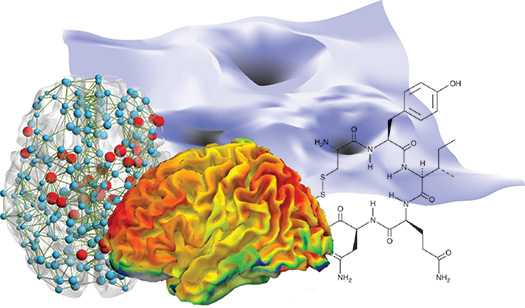
Takamitsu Watanabe
Principal Investigator
Human/Clinical
Professor
Network dynamics behind diverse intelligence
Research
Human cognition is dynamic, and its underlying brain activity is unstable. Thus, neural fluctuations should be essential for human intelligence and its development, while atypical brain dynamics should underpin neuropsychiatric conditions, including autism, schizophrenia and epilepsy. We pursue this framework and investigate biological mechanisms that link large-scale brain network architecture, global/local neural dynamics and typical/atypical cognition. We aim to utilise this research to understand diverse human and artificial intelligence.

Publications
Watanabe, T. & Yamasue, H. Noninvasive reduction of neural rigidity alters autistic behaviors in humans. Nature Neurosci. 28, 1348–1360 (2025).
Watanabe, T., Inoue, K., Kuniyoshi, Y., Nakajima, K. & Aihara, K. Comparison of Large Language Model with Aphasia. Advanced Sci. e2414016 (2025).
Watanabe, T. Causal roles of prefrontal cortex during spontaneous perceptual switching are determined by brain state dynamics. eLife 10, e69079 (2021).
Watanabe, T., Rees, G. & Masuda, N. Atypical intrinsic neural timescale in autism. eLife 8, e42256 (2019).
Watanabe, T. & Rees, G. Brain network dynamics in high-functioning individuals with autism. Nature Commun. 8, 16048 (2017).
Watanabe, T. et al. Clinical and neural effects of six-week administration of oxytocin on core symptoms of autism. Brain 138, 3400–3412 (2015).
Watanabe, T., Masuda, N., Megumi, F., Kanai, R. & Rees, G. Energy landscape and dynamics of brain activity during human bistable perception. Nature Commun. 5, 4765 (2014).
Watanabe, T. et al. Two distinct neural mechanisms underlying indirect reciprocity. Proc National Acad Sci. 111, 3990–3995 (2014).
Watanabe, T. et al. Mitigation of Sociocommunicational Deficits of Autism Through Oxytocin-Induced Recovery of Medial Prefrontal Activity: A Randomized Trial. JAMA Psychiat. 71, 166–175 (2014).
Watanabe, T. et al. A pairwise maximum entropy model accurately describes resting-state human brain networks. Nature Commun. 4, 1370 (2013).
Biography
After medical training in The University of Tokyo (M.D., 2007) and its hospital, I completed a Ph.D. in the lab of Professor Yasushi Miyashita in the same university as a JSPS Research Fellow (2013). I conducted post-doctoral research with Professor Geraint Rees in University College London under JSPS and Marie-Curie Research Fellowships, respectively. In 2018, I was appointed Deputy Team Leader for the Miyashita lab in the RIKEN Center for Brain Science. I launched my lab in IRCN at UTokyo as an Associate Professor (UTokyo Excellent Young Researcher Program) in April 2020. In 2025, I was promoted to Professor in IRCN at UTokyo. Other career awards include the NeuroCreative Award and RIKEN Excellent Achievement Award.


